
Langstone Moor Stone Circle, Stone Row & Settlements
This site is featured on the Princetown 2: White Tor Fort & Langstone Moor Circle & Settlements walk. These photos were taken on Langstone Moor (SX55027886 Butler Vol. 2. Map 30: 12, 10, 2, 5). The Langstone standing stone is 2.76m high and can be seen from some distance. It was restored in its original socket in 1893. The Langstone is close to a stone row consisting of very small stones. Nearby is a bank which maybe a reave. The Langstone standing stone and also the stone circle were used for target practice by American troops who were stationed nearby during the Second World War. Bullet holes can be seen on the Langstone standing stone and the circle was sadly smashed to smithereens. The Langstone Moor Stone circle had been restored in 1894 when all of the stones were re-erected in their original socket holes. Today only 3 stones remain intact with 10 having been destroyed and the rest overturned during World War Two. The debris of the former stones remain in place. The original restored circle consisted of 16 stones in a 20.9m circle. Around 200m to the South of the circle is the Langstone Moor Settlement consisting of 51 huts and a number of associated enclosures. The hut circles are well preserved and door posts can be clearly seen in one of them. The huts probably belonged to Bronze Age farmers who came along long after the stone circle had been built. The last photos here are from the western slopes of Little Mis Tor where there are over a hundred huts scattered in 3 main settlements amongst the clitter on the slopes of the tor.
Included below is an extract from the Second Report of the Dartooor Exploration Committee. It is interesting for two reasons. Firstly it gives an insight into the reasons for the first major restoration of a stone circle on Dartmoor. The "victorian restorers" have had a lot of bad press for their sometimes over enthusiastic efforts at preserving prehistoric Dartmoor sites. Whilst it is true that R. H. Worth was very critical of some of the more exuberant restoration efforts due to lack of accuracy there can be no doubting that the intentions of the Dartmoor Exploration Comittee were both noble and also justified. Hemery referring to the flawed restoration of the cairn and row at Lakehead Hill commented "My own feeling is one of profound thankfulness to the restorers that the monument survives at all" [Hemery p484]. Secondly, there is a suggestion that when this site was first investigated it may have included a secondary circle. Butler suggests the site may also have had a D-shape which is not uncommon with stone circles generally around the country, but this is exceptional for Dartmoor, although many of the Dartmoor circles are not true circles. It is perhaps worth mentioning that many of the rows are not very "straight". If the site includes a secondary circle then it is unique on Dartmooor as a stone circle although there are many cairn circles that have multiple rings.
The photos below were taken on the 25th July 2010.
See also:
Bibliography & references
Baring-Gould, Sabine, Second Report of the Dartmoor Exploration Committee, T.D.A. Vol. 27 pp.81-92 (1895)
Burnard, Robert, Dartmoor Pictorial Records Vol. IV (1894), (2010, Kessinger Publishing reprint) (see pp.63-4 & frontispiece for photo)
Butler, J. Dartmoor Atlas of Antiquities: Vol. 2. - The North (Devon Books, 1991)
Hemery, Eric. High Dartmoor (Robert Hale, 1983) p483
Reasoning for the Restoration of the Langstone Stone circle
Extract from the Second Report of the Dartmoor Exploration Committee
The following extract describes the discovery of Langstone circle and the arrangements made by the Dartmoor Exploration Committee to restore it to ensure it was not damaged further. It is taken from Report & Transactions of the Devonshire Association Vol. 27 (1895) p.84. The photo below the report extract is the one used in the frontispiece of Dartmoor Pictorial Records Vol. IV (1894) taken by Robert Burnard after the restoration which gives an indication of what it looked like before its destruction during the Second World War.
On the brow of Langstone Moor, overlooking the Walkham River, is a fine circle of stones. This was first noticed by Mr. Brent1, of Plymouth; it was again seen by Rev. G.B. Berry, of Emmanuel, Plymouth, and it was last year carefully examined by the Exploration Committee, and His Grace the Duke of Bedford was communicated with, who, with great courtesy and promptitude, undertook to place a party of workmen at the disposal of the Committee for the re-erection of the stones, which had all fallen, owing to the spongy nature of the peat in which they had been originally planted. The fall, however of some of the stones must have taken place comparatively recently, as their pits were open under them, and full of water only.
The position of the circle was one rendering it liable to being robbed for the sake of gate-posts, and indeed it seems probable that, as will be seen presently, it has already suffered on that account. When the stones are re-erected, then strict orders are issued from the Duchy Office that they are not to be interfered with; whereas stones lying on the face of the moor cannot be thus protected, and indeed are carried away without scrupple by men who are confident they can do this without detection.
The circle measures 57 feet in diameter, and consists of sixteen stones. Outside this circle appear to have been another concentric with it; of this, however, only two stones remain in situ, but the pit hole of another, and the broken top of the stone taken from it remain. The singular feature of this outer circle is that the three stones are of a fine elvan, entirely different from the nature of the stones in the inner circle, with the exception of one, which also is of elvan.
In the socket-hole of one of the stones a burnt stone was found, perhaps a "cooking stone", but so burnt as to crumble between the fingers with a little pressure.
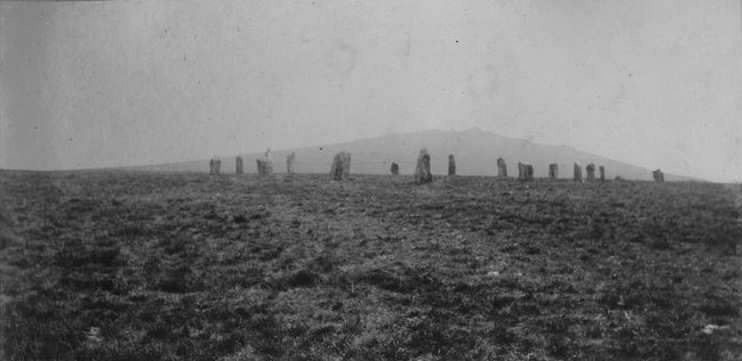
Langstone Stone Circle Restored, photo by Robert Burnard 1894.
1Note added by Prehistoric Dartmoor Walks, the following footnote appears in Dartmoor Pictorial Records p.63: "Mr Francis Brent, of Plymouth, remembers seeing this circle some twenty-five years since, when nearly all, if not the whole, of the stones were prostrate".
Langstone Moor Stone Row & Menhir
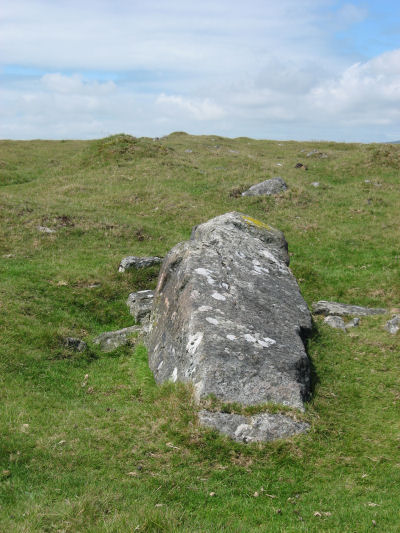
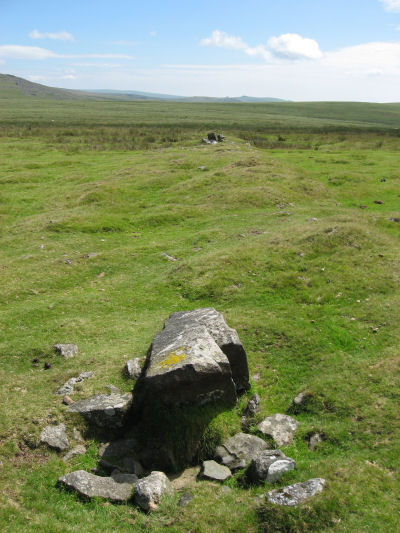
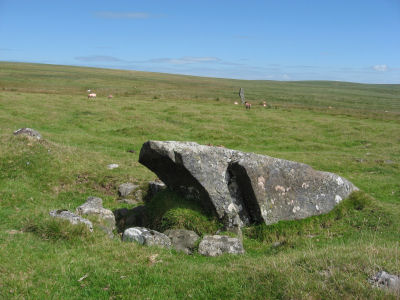
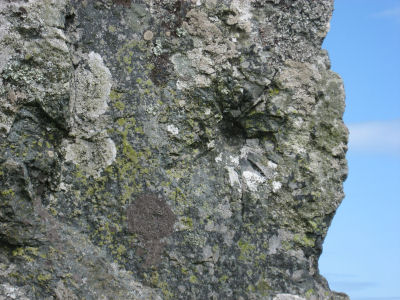
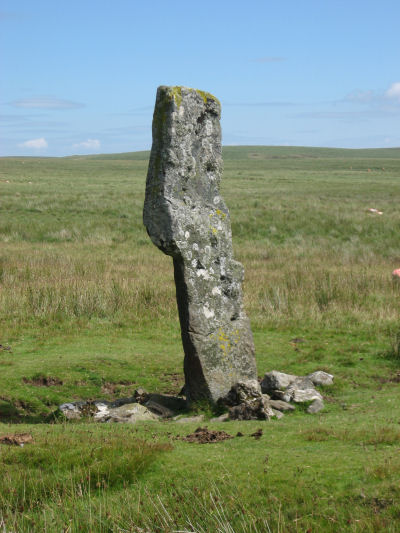
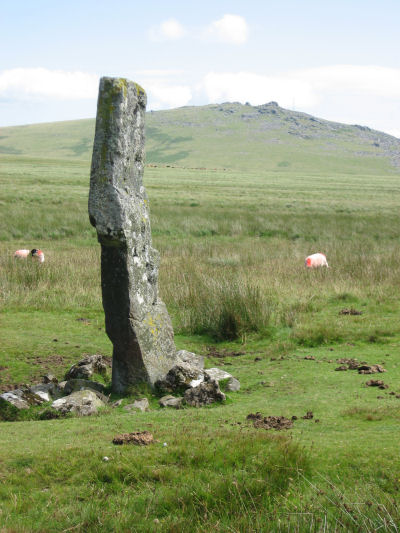
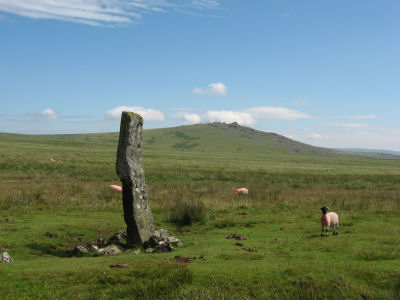
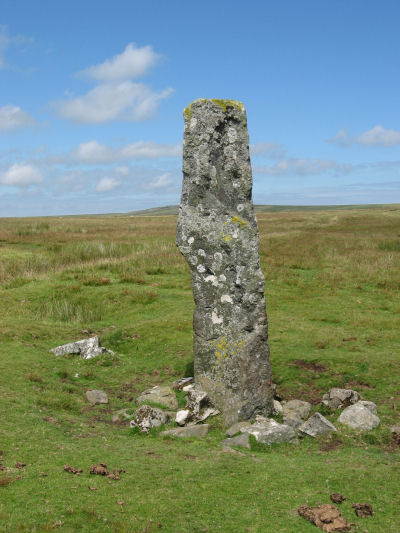
The Langstone Moor Stone Circle


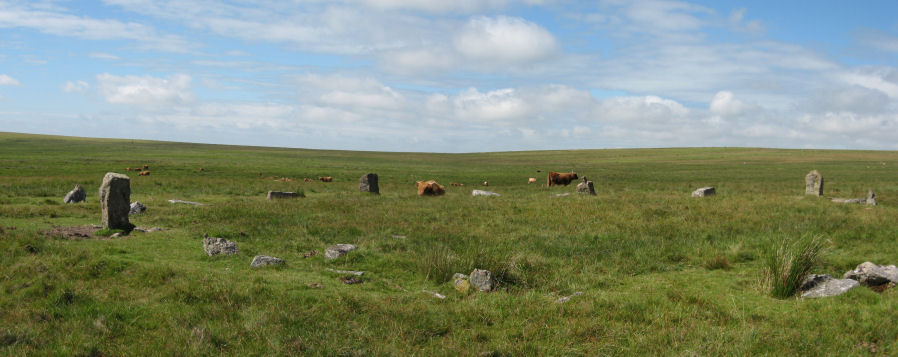
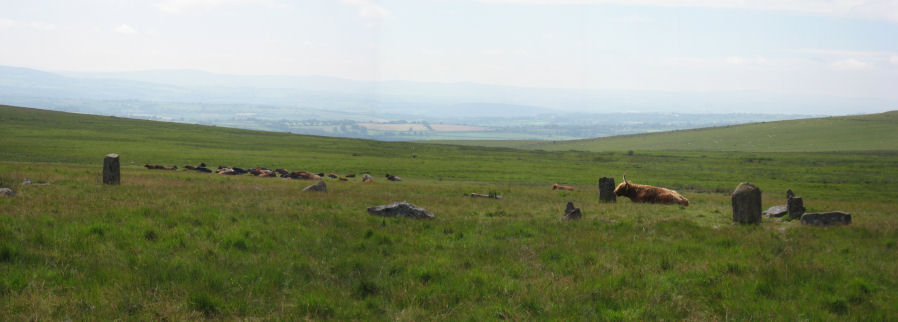


Langstone Moor and Little Mis Tor West Settlements
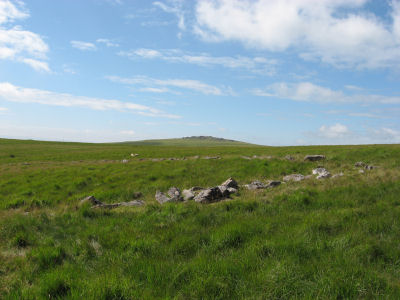
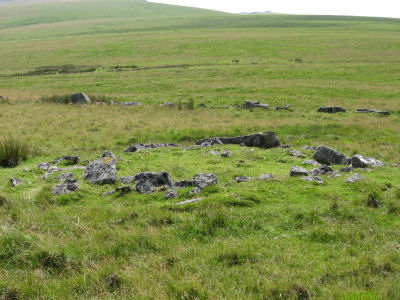
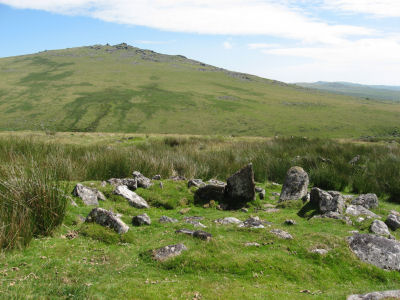
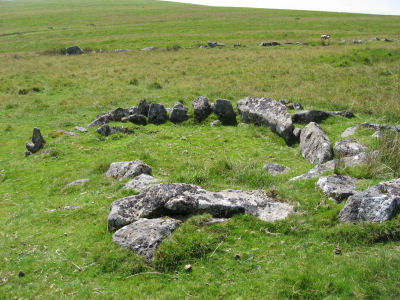
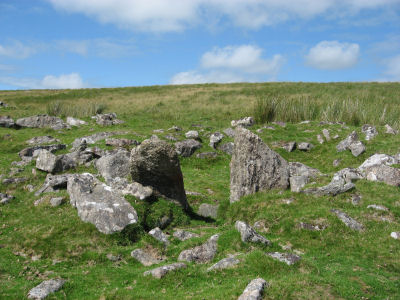
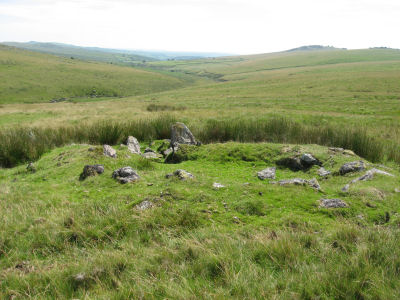

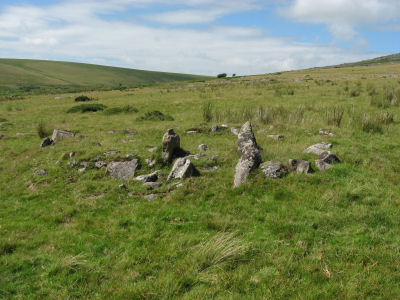
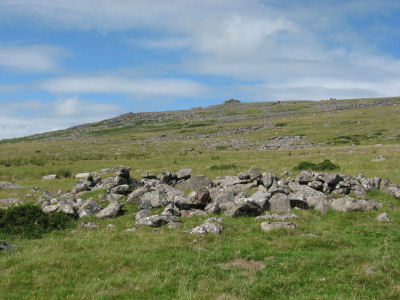
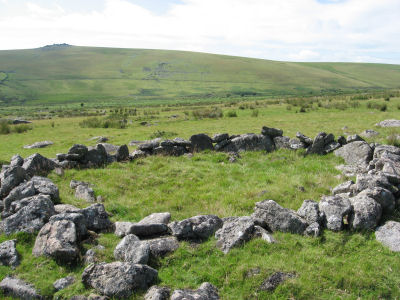
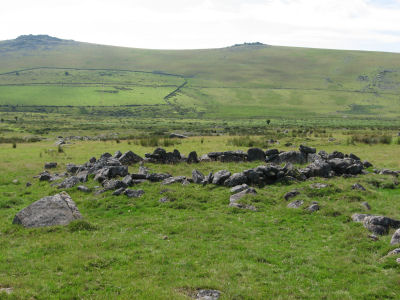
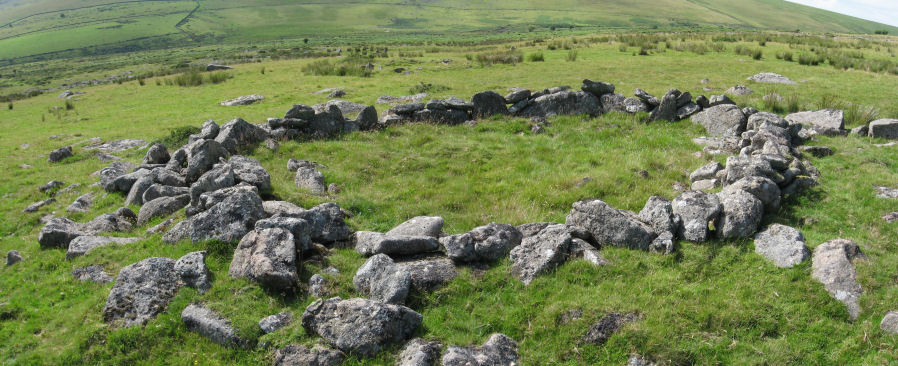
Page last updated 2/6/12